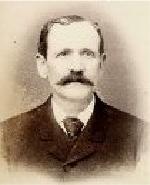The California Gold Rush of January 24, 1848 to the Black Hills of South Dakota Neutrinos of 2011
The California Gold Rush began at Sutter's Mill, near Coloma. On January 24, 1848 James W. Marshall, a foreman working for Sacramento pioneer John Sutter, found shiny metal in the tailrace of a lumber mill Marshall was building for Sutter on the American River Marshall brought what he found to John Sutter, and the two privately tested the metal. After the tests showed that it was gold, Sutter expressed dismay: he wanted to keep the news quiet because he feared what would happen to his plans for an agricultural empire if there were a mass search for gold. However, rumors soon started to spread and were confirmed in March 1848 by San Francisco San Francisco American River California
The Territory of Dakota United States March 2, 1861 , until November 2, 1889 , when the final extent of the reduced territory was split and admitted to the Union as the states of North and South Dakota
The Dakota Territory Gold Stampede days of 1876 started when news of gold in the streams of Dakota’s Black Hills spread like wildfire. Throngs of prospectors, restless adventurers, gamblers and entrepreneurs ventured into the wilderness in search of what only the lucky few among them would find- great wealth in the gold and all that came with it. Ore
The first discovery of gold in the Black Hills of South Dakota in 1874 by members of the Custer Expedition sparked a gold rush that helped precipitate the Great Sioux War of 1876-77. The war culminated with the Battle Black Hills from the Great Sioux Reservation. The famous Homestake Mine in Lead, South Dakota, was located in April 1876 during the infancy of the gold rush. George Hearst and other California

Steven T. Mitchell is a native and long time resident of the Black Hills of South Dakota. He is a graduate of the South Dakota School of Mines and Technology with BS and MS degrees in mining engineering. Mitchell’s career was with the Homestake Mining Company at the Homestake Mine in Lead, SD where he held various engineering and management positions.




0 comments:
Post a Comment